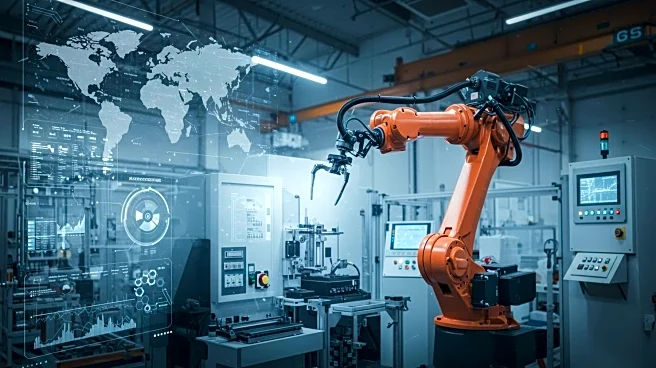What's Happening?
Net foreign direct investments (FDI) into the Philippines experienced a significant rise in May, driven primarily by inflows from the United States and the manufacturing sector. According to data from the Bangko Sentral ng Pilipinas (BSP), net FDI inflows increased by 21.3% year-on-year, reaching $586 million, up from $483 million in May 2024. This surge was largely attributed to an 88.3% expansion in non-residents' net investments in debt instruments, which rose to $427 million from $22 million in the same period last year. However, there was a notable 61.4% decline in non-residents' net investments in equity capital, which fell to $62 million from $161 million. The primary sources of equity capital placements in May 2025 were the United States, Japan, Singapore, and South Korea, with significant investments directed towards manufacturing, real estate, and the electricity, gas, steam, and air-conditioning supply industries.
Why It's Important?
The increase in FDI inflows highlights the growing economic ties between the United States and the Philippines, particularly in the manufacturing sector. This development is crucial as it underscores the role of U.S. investments in bolstering the Philippine economy, potentially leading to job creation and technological advancements. The rise in debt instrument investments suggests a strong confidence in the Philippine market's stability and growth potential. However, the decline in equity capital investments indicates potential challenges or uncertainties that may need to be addressed to sustain long-term investment growth. The overall decrease in FDI inflows for the first five months of 2025, despite the strong performance in May, suggests that while there are positive trends, there are also underlying issues that could impact future investment flows.
What's Next?
To maintain and potentially increase FDI inflows, the Philippines may need to address the factors contributing to the decline in equity capital investments. This could involve policy adjustments or incentives to attract more foreign investors. Additionally, continued collaboration with major investing countries like the United States could further strengthen economic ties and encourage more investments. Monitoring the global economic environment and adapting to changes will be crucial for sustaining the positive momentum in FDI inflows.













